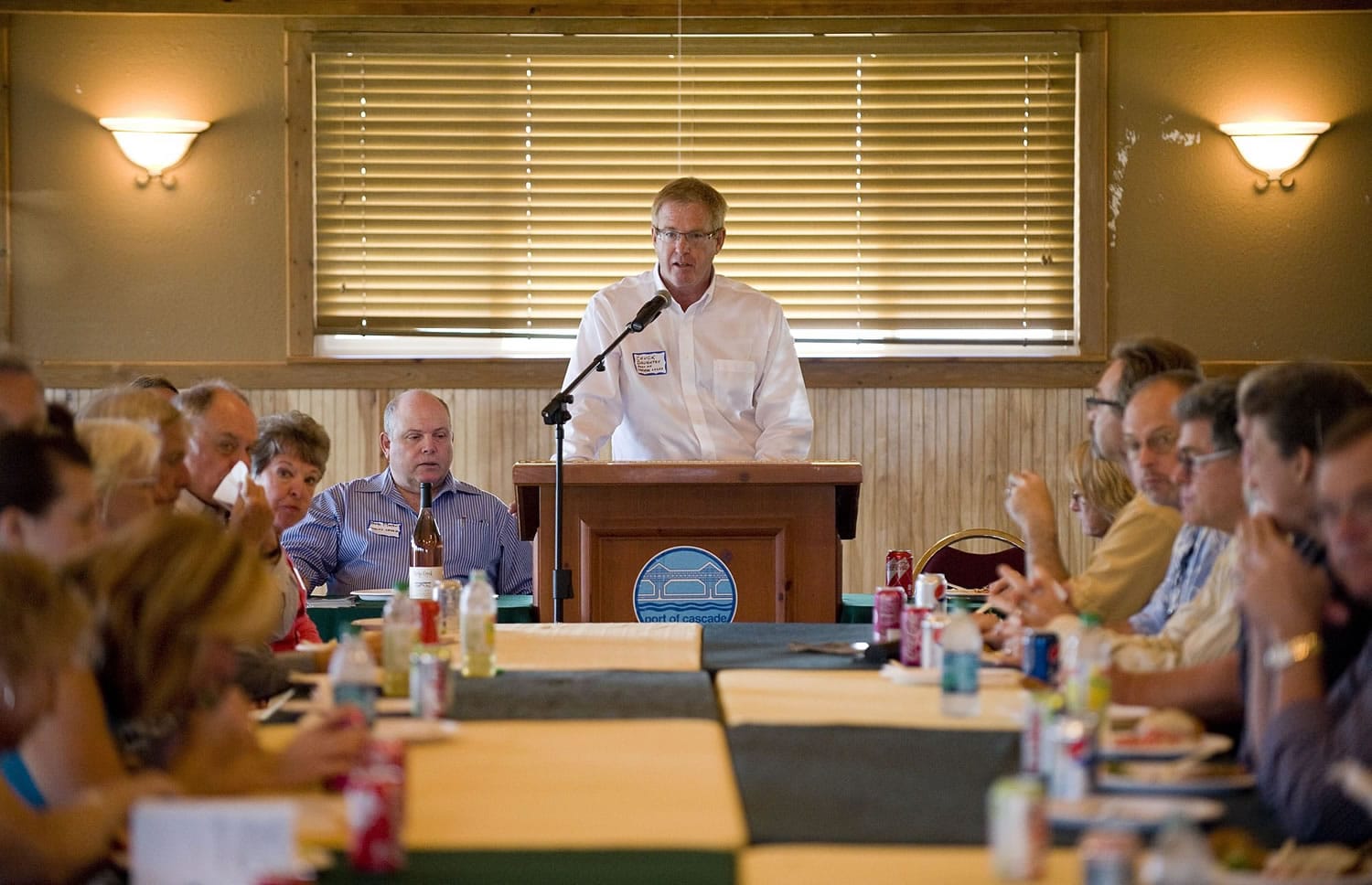Related story
Columbia River Gorge National Scenic Area Act turns 25.
CASCADE LOCKS, Ore. — Over the past 25 years, the Columbia River Gorge National Scenic Area Act has been more successful at achieving its first goal — protecting the scenery and natural resources of the Gorge — than at its second, boosting the economic vitality of Gorge towns and cities, one community leader said Saturday.
The discussion occurred at an economic forum marking the act’s 25th anniversary in this struggling Gorge town.
Gorge counties “usually lead their states in unemployment,” said Chuck Daughtry, manager of the Port of Cascade Locks. “More attention needs to be paid to development in the urban areas.”
One of the challenges facing Gorge towns is overlapping jurisdictions, Daughtry said. Proposed development projects in and around Cascade Locks must win approval from a gantlet of entities, including the Forest Service, the Columbia River Gorge Commission, the Oregon Department of Environmental Quality and the Union Pacific Railroad, among others, Daughtry said.
“This has to be one of the most-regulated areas in the United States,” he said.
Another challenge facing Cascade Locks, he said, is that it is trying to develop its infrastructure for tourism. For example, the port has developed a sailing beach at its marina and hopes to expand it.
But tourism in the mid-Gorge is seasonal, Daughtry said; the town needs year-round jobs.
Cascade Locks had pinned its hopes on a tribal casino, but those hopes have dimmed.
Not all is doom and gloom when it comes to the Gorge economy, however. Two promising sectors are wineries and technology.
“We now have 34 wineries in the Columbia Gorge,” said Bob Morris, owner of Phelps Creek Vineyard in Hood River, Ore., and past president of the Columbia Gorge Wine Growers Association. Those wineries now have their own appellation, one of the few bistate appellations in the nation, he said.
But the Oregon Wine Board and the Washington Wine Institute “sometimes don’t see us as an overlapping region,” which makes it more difficult to market wines grown in the unique soils and climatic conditions of the Gorge, he said.
Those conditions vary from west to east, Morris said.
“When you come to the Gorge, you get a world of wines in 40 miles,” he said.
Jeff Nicol of the Gorge Tech Alliance said the tech sector “has had a lot of success” in promoting the Gorge as a tech-friendly place, in part through the efforts of Google, which has a large server farm in The Dalles. The alliance does that by encouraging networking and continuing education for tech employees, he said. Its members now employ 1,400 tech-based employees in both states, in relatively high-paying jobs, he said.
The alliance participates in an annual job fair and holds “geek lunches” where workers can talk technology.
One hurdle to growth of the tech sector, Nicol said, is that the Gorge has no four-year university. The private sector has attempted to fill that gap. For example, Google sponsors a speaker series in which it brings in world-class speakers to talk about leading-edge technology.
About 200 students at Gorge schools competed in a Lego robotics contest in December, Nicol said. That program recently got a $300,000 grant from the state of Oregon.



